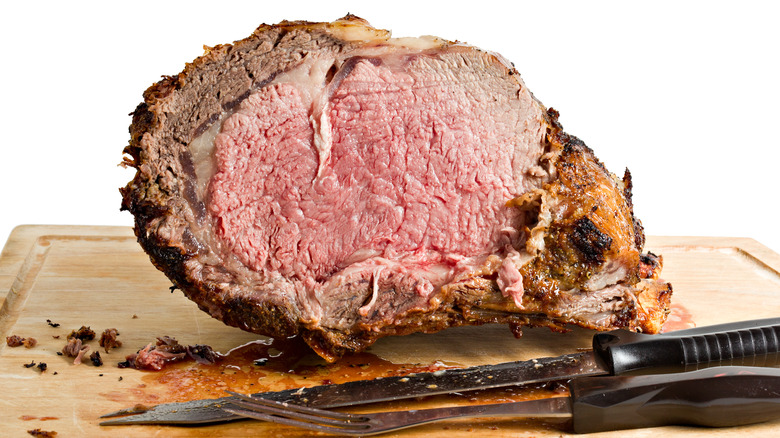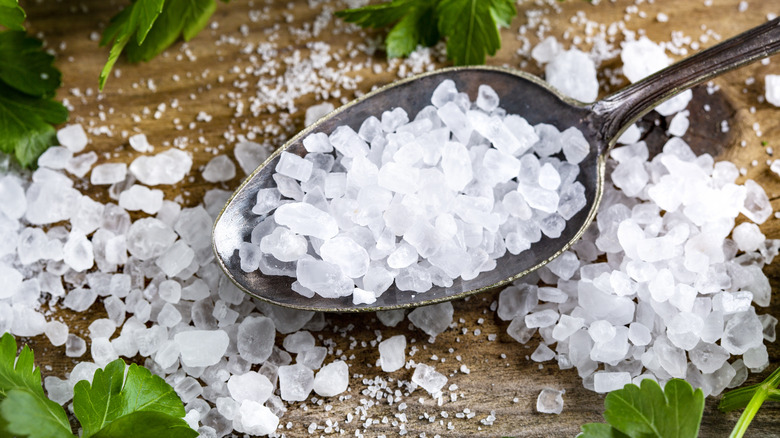Why The Best Steak Restaurants Cover Prime Rib In Rock Salt
If you've ever eaten at a high-end steakhouse, it's obvious the care that the restaurant's skilled chefs put into even relatively straightforward dishes like prime rib. But creating those incredible flavors and textures often requires a few culinary tricks — one of which only needs some common rock salt.
This simple, effective technique is practiced every day at San Francisco's House of Prime Rib, where it's used to produce 1,200 orders of prime rib daily. After the ribs are dry-aged to develop the characteristically beefy flavor, they're immediately buried in the rock salt. For those who aren't familiar, the difference between rock and sea salt is primarily the coarser texture and less complex flavor of rock salt, which is mined instead of created from seawater. After being covered in rock salt, the prime ribs are put directly in the oven and baked while surrounded by the salt.
Proponents say this accomplishes three key goals for a perfect prime rib. First, it seals in moisture, avoiding those bland, dry prime ribs many people have encountered at less-conscientious restaurants. Additionally, the salt conducts heat more evenly, allowing the hefty cut to cook through in the center without being overdone outside. Finally, it infuses flavor into the beef, further amping up your steakhouse experience.
Thousands of years of flavor tradition
Once the prime rib is cooked and rested, it's broken free of the now-solidified salt beds and served to hungry diners. House of Prime Rib calls this method an "old English formula," though its exact origins aren't clear. However, similar ways to cook meat and fish have been documented in the Mediterranean as far back as the 4th century BCE.
While this process is most commonly done at fancier restaurants, there's no reason you can't do it at home. Rock salt is readily available in grocery stores or online, with varying styles ranging from $2-$8 per pound. You'll likely need several pounds to fully cover a prime rib that includes multiple servings, though the exact amount will vary depending on your cooking vessel. You don't want to overdo it.
While you've already done a lot to ensure a nice, juicy cut of meat, don't relax quite yet. Be careful to avoid the biggest mistake you've been making with prime rib, which can make or break your fancy dinner.

